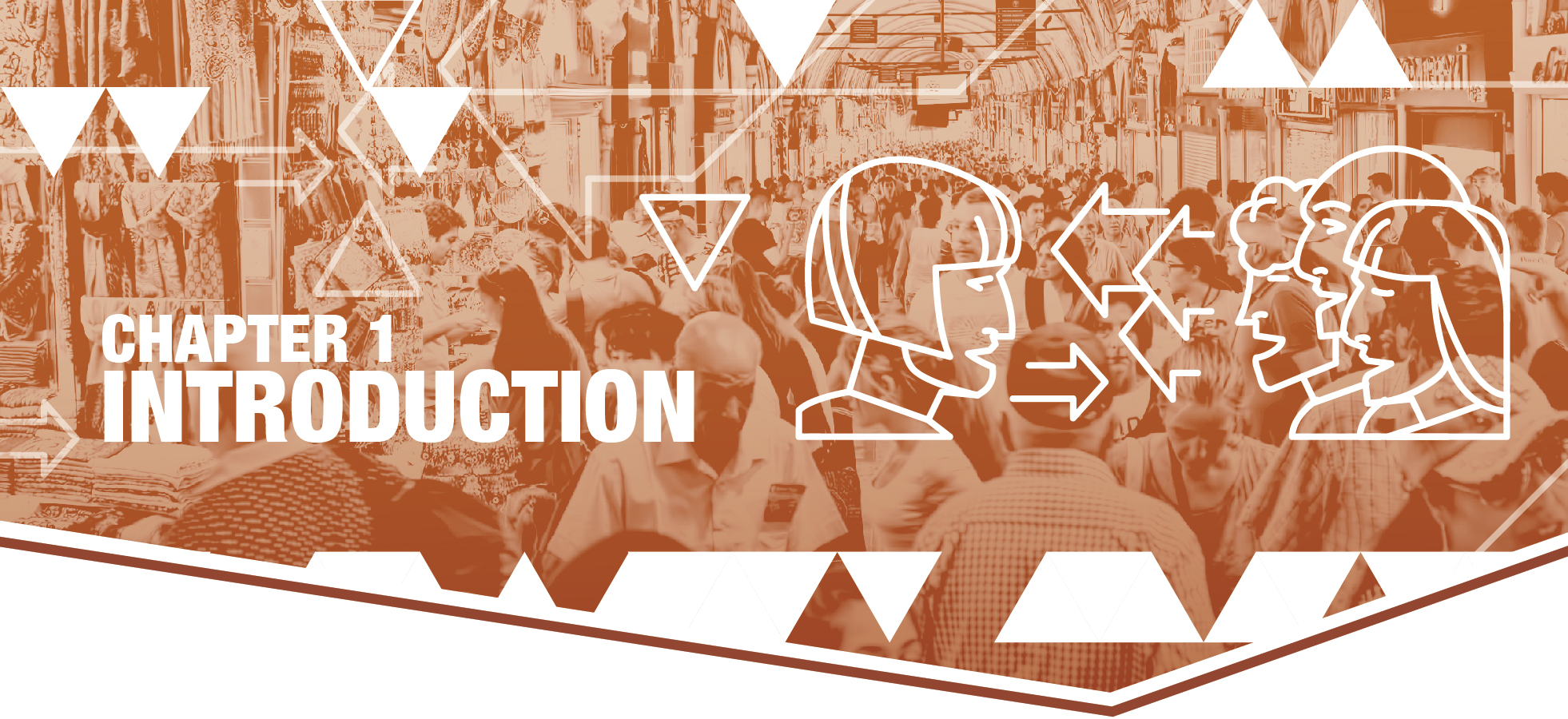1. Introduction
 is a particular way of knowing that systematically investigates, categorizes, and explains facts or truths. A key word here is systematically. Conducting science is a deliberate process. Scientists gather information in a way that is organized and intentional and usually follows a set of predetermined steps. They follow these procedures in order to arrive at an understanding of the world that accurately reflects reality and holds up in the face of scrutiny and criticism.
is a particular way of knowing that systematically investigates, categorizes, and explains facts or truths. A key word here is systematically. Conducting science is a deliberate process. Scientists gather information in a way that is organized and intentional and usually follows a set of predetermined steps. They follow these procedures in order to arrive at an understanding of the world that accurately reflects reality and holds up in the face of scrutiny and criticism.
Of course, you don’t have to be a scientist to know how the world works. You don’t even need to be a scientist to conduct research. For example, people routinely do “research” on the best place to buy things they want. Journalists conduct “research” on topics of public interest, such as interviewing people about their views on politics. Students do online “research” to find the information they need to complete their term papers. Businesses conduct “research” on their customers to learn about their spending habits. However, none of the above can be considered scientific research unless it (1) contributes to a larger body of scientific knowledge, and (2) follows the scientific method. refers to a systematic and organized body of knowledge that is acquired using the scientific method. The refers to a standardized set of techniques for acquiring and vetting knowledge, such as procedures for making observations or interpreting results.

Sociology is a social science. By the word “social,” we mean that sociology focuses on how human beings interact with one another. By the word “science,” we mean it uses procedures—as we’ve noted, organized and intentional procedures—to uncover truths about that behavior. Specifically, is the study of social life and social groups. Sociologists are interested in how individuals shape—and are shaped by—the social groups around them, which may be as small as individual families or couples, or as large as whole nations. Put another way, sociologists help us understand how our personal lives are influenced by larger social forces, such as social networks, institutions, and cultures—in short, who we know, what rules guide our actions, and how the various groups we are part of view the world.
Compared to other social sciences, sociology is a very broad field that uses a variety of strategies and techniques to gather and assess scientific knowledge. We call these systematic approaches to learning about our social world . This textbook is devoted to teaching you about sociological research methods. It is geared to students at all levels, with “Deeper Dive” sections that are intended for more advanced students, and sidebars that can also be skipped by readers who just want the basics. After reading this book, we hope you will be better able to understand the results of research studies, critique their approaches and conclusions, and conduct rigorous research of your own.
In this chapter, we’ll consider the variety of ways that science allows us to know things. We’ll also talk about what makes social scientific research—and sociological research—unique in relation to other forms of understanding reality.
The Language of Science
All scientists employ jargon—special words that are used by a profession or group—in the course of their work. By reading and discussing each other’s work, scientists ensure the quality and relevance of their research. Using a shared language, in turn, helps create a strong scientific community that can draw on a common identity and common set of perspectives—the basis for a constructive dialogue.
It’s important for students new to a scientific field to know its terms and how they are appropriately used. A critical and occasionally prickly bunch by temperament, scientists may dismiss outright the views of people who are unfamiliar with their lingo and traditions. To help you familiarize yourself with the language of science, below we’ve listed some key terms used virtually everywhere across scholarly and scientific fields. We should note that there is often not a full consensus about the meaning of these terms—or any of the terms used in this book, frankly—so perfectly respectable scientists may disagree with what we say here. (Hopefully not.)
Scholars, researchers, scientists. “Scholar” can be used as a synonym for words like “researcher” and “scientist,” though it typically refers to a person who engages in research for its own sake (rather than for a practical purpose, as we’ll discuss later). A college professor would be a scholar. Nonscientists who are academics (such as a literature professor) would also be scholars.
Disciplines, fields, subfields. Scholars do their work within an academic “field,” or “discipline.” Sociology is an academic field. Each discipline has their own traditions, philosophies, and research methods. Sometimes the distinction seems arbitrary—for instance, “history” is a particular research method (the historical method), while “political science” focuses on a specific domain of human activity. What’s more, there is plenty of overlap between fields: sociologists study politics, anthropologists study social ties, economists study culture, and so on. That said, because advances in knowledge within a field often happen through interactions between scholars within a particular field, it’s important to understand and appreciate these disciplinary boundaries. There are also subfields within each field—for example, economic sociology and social psychology are two subfields within sociology.
Phenomenon. Scientists are typically interested in studying , a catch-all term for things, events, and processes that (1) can be observed, and that (2) raise interesting questions for scientists about how the world works. Sociologists and other social scientists study social phenomena, which have to do with human beings and their interactions.
Observation. Scientists don’t just sit in an ivory tower and ruminate about the world (or at least ideally, they don’t). They draw upon actual experiences seeing, hearing, or otherwise documenting the reality around them, which should be the basis for any knowledge they produce. These observations can be the researchers’ own or those of other people, but in either case, the observations must be conducted in a systematic and credible way.
In addition to this general meaning, the word “observation” has more specific uses in the social sciences. As we will discuss in Chapter 9: Ethnography, it can refer to —a researcher’s direct observation of social spaces as a method of gathering qualitative data. As we’ll talk about in Chapter 12: Experiments, scientists also distinguish between —information collected under experimental conditions, where researchers can control the conditions under study—and , which scientists gather in the real world from surveys, in-depth interviews, ethnographic observation, and other methods that don’t use an experimental design.
Data, datum, data point, dataset. We’ll use the word quite a bit in this textbook. It refers to facts, details, statistics, and other information used to understand some phenomenon of interest. Ideally, data is collected through a scientific process of the sort described in this chapter, but any information could be considered data—what matters for the strength of a particular study is often how the scientist uses the data. You’ll notice that we have referred to “data” as a singular noun. This is a matter of great controversy among scientists. (Did we mention scientists are a bit judgmental?) Regularly, they refer to “data” in the plural form (“The data are quite conclusive”), even though no normal people ever do this. They point out, pedantically, that “datum” is the singular form of data. At the risk of alienating our colleagues, we will refer to “data” in the singular form. In doing so, we follow the lead of many mainstream news publications (Rogers 2012), and since one theme of this book is the importance of connecting research to the real world, we humbly suggest this simple way of making your writing more accessible to nonscientists. That said, when talking to other social scientists, you may find it helpful to and show you are a card-carrying scientist by using “data” as a plural noun (we forgive you).
In the scientific community, researchers use the term to refer to a specific statistic or other piece of information (“That data point is an outlier”). Now let’s consider the opposite case: lots and lots of data. All the data relating to a specific survey or study can be grouped together into a database, or what scientists call a . For example, think about a list of students in your class, which includes information about their names, ID numbers, and email addresses. That would be a (small) dataset, but social scientists regularly work with datasets that contain information about thousands of people, with specific details about each individual’s personal background and attitudes on a variety of subjects. It’s also worth noting that the data in datasets doesn’t have to deal with individuals per se: as we will describe later, it can be about anything—from books and movies, to families and relationships, to organizations and countries.

Literature. Science always builds upon existing knowledge. Even if their scientific research overturns parts of that accumulated knowledge, scientists should always know what previous studies have been done on their subject area, and they need to connect their own work to that body of knowledge. is the name we give to the existing scientific knowledge relating to a particular phenomenon. Here, we’re not talking about the “literature” you read in your English classes—novels and poetry and the like. The scientific literature amounts to all the articles, books, and other material written by scholars on a specific topic. Scientists (and scholars more broadly) care so much about literature that they bog down their writing with endless parenthetical citations (a topic discussed in Appendix A: Presenting, Writing, and Publishing). Their intention is not to bore their readers, but to precisely source their information and be clear about whatever intellectual debts they owe to other scholars.
Popular culture often depicts scientists as antisocial loners and mad geniuses (which, to be honest, is not always an unfair assessment). But the fact that they are deeply rooted in the scientific literature on their subject ensures that they are contributors to a grand tradition of learning, rather than just unwashed crackpots toiling away in their garage laboratories. “If I have seen further it is by standing on the shoulders of Giants,” the physicist Isaac Newton (1675) famously said. Reading and connecting your work to the existing literature on your topic is how you, as a scientist, stand on the shoulders of the scientists who came before you.
Opening chapter image credit: Danilo Ugaddan, via Pexels. Adapted by Bizhan Khodabandeh.
A discipline of learning that uses formal, systematic procedures to observe and measure phenomena.
A systematic and organized body of knowledge that is acquired using the scientific method.
A standardized set of techniques for acquiring and vetting knowledge, such as procedures for making observations or interpreting results.
The study of social life and social groups. Sociologists study how individuals shape (and are shaped by) social groups, which may be as small as individual families or couples, or as large as whole nations.
Organized, logical ways of learning about and knowing the world around us.
Things, events, and processes that can be observed and that raise interesting questions for scientists about how the world works.
A researcher’s direct observation of social spaces as a method of gathering qualitative data.
Information collected under experimental conditions, where researchers can control the conditions under study.
Information that scientists gather in the real world from surveys, in-depth interviews, ethnographic observation, and other methods that don’t use an experimental design.
Facts, details, statistics, and other information used to understand some phenomenon of interest. Ideally, data is collected through a scientific process, but any information could be considered data for research purposes.
The practice of moving between different linguistic or cultural styles.
A specific statistic or other piece of information employed in research.
All the data relating to a specific survey or study that is grouped together in a single file or set of files (known more colloquially as a database).
The existing scientific studies that relate to a particular phenomenon.

